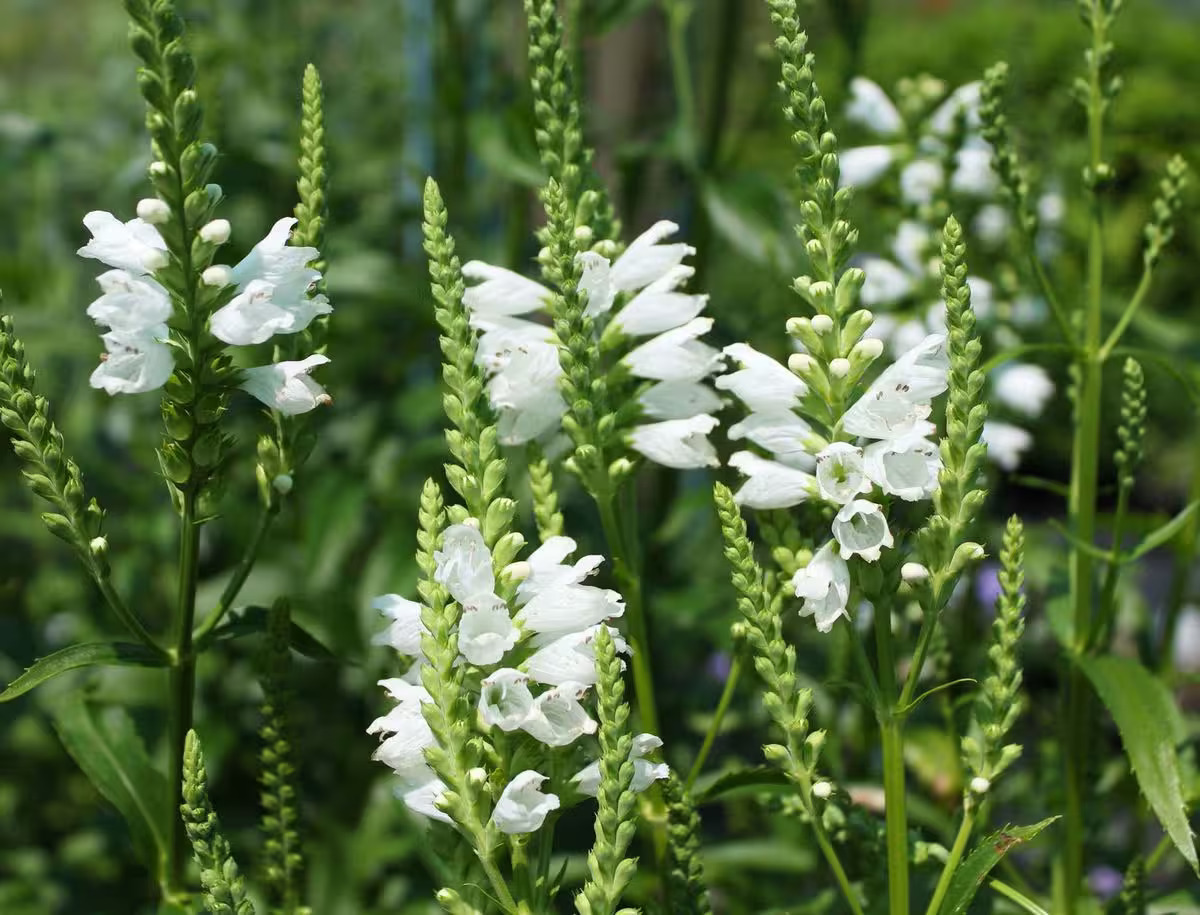
Physostegia, also known as the obedient plant, is a fascinating perennial that often surprises gardeners with its unique characteristics. Why is it called the obedient plant? Because its flowers can be bent into various positions and will stay put, almost as if they're obeying your commands. This plant, native to North America, thrives in sunny spots and can grow up to four feet tall. Its tubular flowers, which bloom in late summer, attract bees, butterflies, and hummingbirds, making it a great addition to any garden. Despite its beauty, it can be invasive, so regular maintenance is essential. Ready to learn more? Let's dive into 39 intriguing facts about this captivating plant!
39 Facts About Physostegia
What is Physostegia?
Physostegia, commonly known as the Obedient Plant, is a fascinating perennial that belongs to the mint family. Its name comes from the Greek words "physa" meaning bladder and "stege" meaning covering, referring to the plant's inflated calyx.
-
Obedient Plant: The name "Obedient Plant" comes from the flower's ability to stay in place when moved.
-
Mint Family: Physostegia is part of the Lamiaceae family, which includes other aromatic plants like mint and lavender.
-
Perennial: This plant lives for more than two years, making it a perennial.
-
Native to North America: Physostegia is native to North America, particularly found in the United States and Canada.
Physical Characteristics
Physostegia plants are known for their striking appearance and unique features. Here are some interesting facts about their physical characteristics.
-
Height: These plants can grow up to 4 feet tall.
-
Flowers: The flowers are tubular and can be pink, white, or purple.
-
Leaves: The leaves are lance-shaped and arranged oppositely on the stem.
-
Calyx: The calyx is inflated, giving it a unique appearance.
-
Square Stems: Like other members of the mint family, Physostegia has square stems.
Growing Conditions
Understanding the growing conditions for Physostegia can help you cultivate these plants successfully.
-
Sunlight: They thrive in full sun but can tolerate partial shade.
-
Soil: Well-drained soil is ideal for their growth.
-
Watering: They prefer moist soil but can tolerate short periods of drought.
-
Hardiness Zones: Physostegia is hardy in USDA zones 3-9.
-
Propagation: These plants can be propagated by division or from seeds.
Ecological Importance
Physostegia plays a significant role in the ecosystem. Here are some facts about its ecological importance.
-
Pollinators: The flowers attract bees, butterflies, and hummingbirds.
-
Erosion Control: Their extensive root system helps in controlling soil erosion.
-
Wildlife Habitat: They provide habitat and food for various insects and birds.
-
Native Plant Gardens: Often used in native plant gardens to support local wildlife.
Common Varieties
There are several varieties of Physostegia, each with unique characteristics.
-
Physostegia virginiana: The most common species, known for its pink or white flowers.
-
Physostegia parviflora: Known for its smaller flowers and compact growth.
-
Physostegia angustifolia: Features narrow leaves and purple flowers.
-
Physostegia intermedia: A hybrid variety with a mix of characteristics from different species.
Medicinal Uses
While not widely known for medicinal uses, Physostegia has some traditional applications.
-
Traditional Medicine: Native Americans used parts of the plant for medicinal purposes.
-
Aromatherapy: The plant's aromatic properties are sometimes used in aromatherapy.
Landscaping Uses
Physostegia is a popular choice for landscaping due to its beauty and versatility.
-
Borders: Often used in garden borders for its striking appearance.
-
Cut Flowers: The flowers make excellent cut flowers for arrangements.
-
Mass Plantings: Ideal for mass plantings in large gardens or parks.
-
Butterfly Gardens: Commonly used in butterfly gardens to attract pollinators.
Challenges in Cultivation
Growing Physostegia can come with some challenges. Here are a few to keep in mind.
-
Invasiveness: The plant can become invasive if not controlled.
-
Pests: Susceptible to pests like aphids and spider mites.
-
Diseases: Can be affected by fungal diseases like powdery mildew.
-
Maintenance: Requires regular maintenance to keep it from spreading uncontrollably.
Interesting Tidbits
Here are some fun and lesser-known facts about Physostegia.
-
Name Origin: The name "Physostegia" refers to the plant's bladder-like calyx.
-
Obedient Nature: The flowers' ability to stay in place when moved is a unique trait.
-
Historical Use: Used historically by Native Americans for various purposes.
-
Cultural Significance: Sometimes used in cultural ceremonies and rituals.
-
Scientific Research: Studied for its potential medicinal properties.
-
Garden Shows: Often featured in garden shows and exhibitions.
-
Educational Tool: Used in educational settings to teach about plant biology and ecology.
Final Thoughts on Physostegia
Physostegia, or Obedient Plant, is a fascinating addition to any garden. With its unique ability to stay in place when moved, it’s a fun plant to interact with. These plants thrive in sunny spots and can grow in various soil types, making them versatile for different garden settings. They attract pollinators like bees and butterflies, adding life and movement to your garden. However, they can be a bit invasive, so regular maintenance is key. Knowing these facts helps you better understand and care for this intriguing plant. Whether you're a seasoned gardener or just starting, Physostegia offers beauty and a touch of whimsy to your outdoor space. Happy gardening!
Was this page helpful?
Our commitment to delivering trustworthy and engaging content is at the heart of what we do. Each fact on our site is contributed by real users like you, bringing a wealth of diverse insights and information. To ensure the highest standards of accuracy and reliability, our dedicated editors meticulously review each submission. This process guarantees that the facts we share are not only fascinating but also credible. Trust in our commitment to quality and authenticity as you explore and learn with us.
